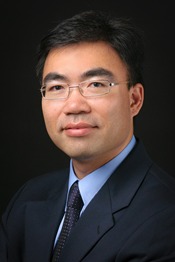Program Information
Auto-Segmentation for Thoracic Radiation Treatment Planning: A Grand Challenge

S Armato
G Sharp
J Yang
H Veeraraghavan
J Yang
S Armato1*, G Sharp2*, J Yang3*, H Veeraraghavan4*, (1) The University of Chicago, Chicago, IL, (2) Massachusetts General Hospital, Boston, MA, (3) The University of Texas MD Anderson Cancer Center, Houston, TX, (4) Memorial Sloan Kettering Cancer Center, New York, NY
Presentations
10:00 AM : The current state of grand challenges - S Armato, Presenting Author10:10 AM : Overview of current status of auto-segmentation in radiation oncology - G Sharp, Presenting Author
10:20 AM : Introduction to the auto-segmentation grand challenge - J Yang, Presenting Author
10:30 AM : Real-time challenge results announcement - H Veeraraghavan, Presenting Author
10:35 AM : Winners 1, 2, 3 present their algorithms and results - J Yang, Presenting Author
TH-CD-FS2-0 (Thursday, August 3, 2017) 10:00 AM - 12:00 PM Room: Four Seasons 2
Rapid advances in radiation therapy call for the fast and accurate segmentation of medical images for treatment planning. The overall objective of this grand challenge is to provide a platform for comparison of various auto-segmentation algorithms used to delineate organs at risk (OARs) from the computed tomography (CT) images of thoracic patients in radiation treatment planning. The results will provide an indication of the performance achieved by various auto-segmentation algorithms and can be used to guide the selection of these algorithms for clinical use if desirable. The grand challenge invites participants to apply their developed algorithms to perform auto-segmentation of OARs from CT images that were scanned for thoracic radiation treatment planning, including esophagus, heart, lung, and spinal cord. The grand challenge will consist of two stages: offline contest and real-time contest. Once enrollment is complete, a set of 40 training cases will be distributed to the participants. Participants can use the training data to tune/train their algorithms. At the same time, a set of 12 test cases will be distributed to the participants. The participants are expected to perform auto-segmentation on the test cases using their trained algorithms at their own institutions and return the results to the host within a specific time. The host will analyze the offline results and invite the top participants to participate in the real-time contest, during which the participants will perform a live segmentation (at the AAPM Annual Meeting) on another set of 12 test cases and submit the results within 2 hours. Then the host will analyze the real-time contest results and rank the participants. At the symposium, the real-time contest results will be announced, and the top 3 participants will present their auto-segmentation algorithms.
Learning Objectives:
1. To understand the principles, methods and state-of-the-art in auto-contouring.
2. To compare the relative performance of automatic and manual contouring, per method/solution and per organ-at-risk.
3. To learn about evaluation methods for automatic segmentation.
Handouts
- 127-35319-418554-126028.pdf (S Armato)
- 127-35320-418554-126944-1723780800.pdf (G Sharp)
- 127-35323-418554-127060.pdf (H Veeraraghavan)
Contact Email:



